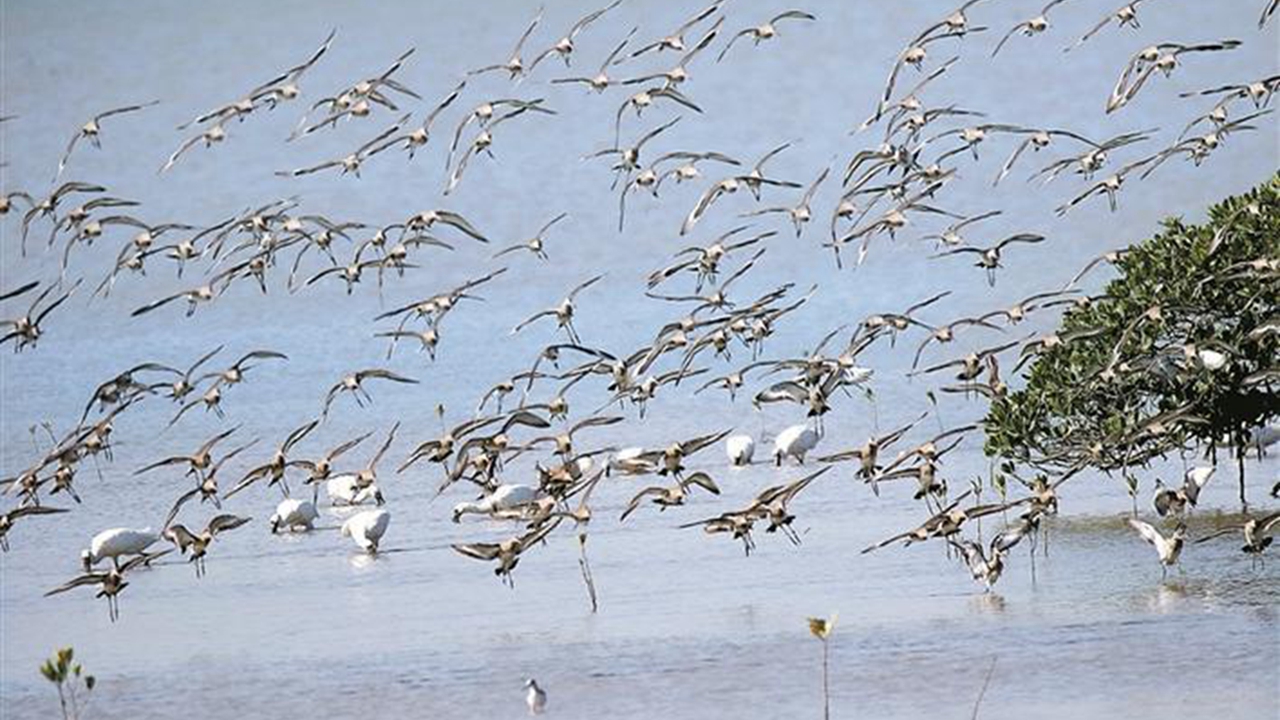City explores ways for biodiversity protection
Writer: Wang Jingli | Editor: Zhang Chanwen | From: Shenzhen Daily | Updated: 2022-09-29
A+ A- Print
Over the past decade, Shenzhen has regarded environmental protection as important as economic and social development and explored ways for biodiversity conservation in urban areas, Shenzhen Evening News reported.

A flock of birds fly over Futian Mangrove Nature Reserve. Li Jingchuan
Shenzhen has built a wildlife crossing between Paiya and Qiniang mountains in order to protect the city’s biodiversity.
According to data provided by the Shenzhen Municipal Ecology and Environment Bureau, Shenzhen has recorded 2,086 species of wild vascular plants and 585 species of native terrestrial wild vertebrates. Among which, 128 species are national key protected wild animals and plants.
Some wild animals that once disappeared like leopard cats were found returning to the city.
In 2015, Shenzhen set up a 974.5-square-kilometer basic ecological control line and explored ways to protect biodiversity.
The city’s first mountain-sea hiking trail extending from Tanglang Mountain to Shenzhen Bay via Dasha River has been completed recently. Moreover, Shenzhen has rolled out plans to build a “city in parks.”
On June 13, a bird with white feathers and a yellow beak was spotted sometimes staring at the water surface and foraging at OCT National Wetland Park. It was later confirmed that it was a yellow-billed egret, a national first-class key protected animal.
At present, OCT National Wetland Park recorded over 1,300 species including the endangered black-faced spoonbill, according to the report.
Huang Yu, a volunteer from a local ocean protection organization, discovered coral spawning for the first time on April 26 last year in Dapeng.
Huang told the News that she has been engaged in ocean protection work for five years and witnessed that a growing number of citizens had started paying attention to ocean and the city’s ocean biodiversity.
Huang said coral spawning requires a healthy ecosystem under the sea. As a result, the discovery not only suggested that the water quality in Shenzhen meets the corals’ reproduction needs, but also showed that the city has effectively protected its ocean and marine environment.
In recent years, Shenzhen also rolled out regulations and measures to protect ocean biodiversity. Monitoring and investigation results showed that Shenzhen has identified a total of 78 species of phytoplankton, 237 species of zooplankton and 139 species of fish resources.
Shenzhen will continue biodiversity investigation and ensure forest coverage reaches over 37% and the conservation rate of national key protected animals and plants reaches more than 98%, according to the report.